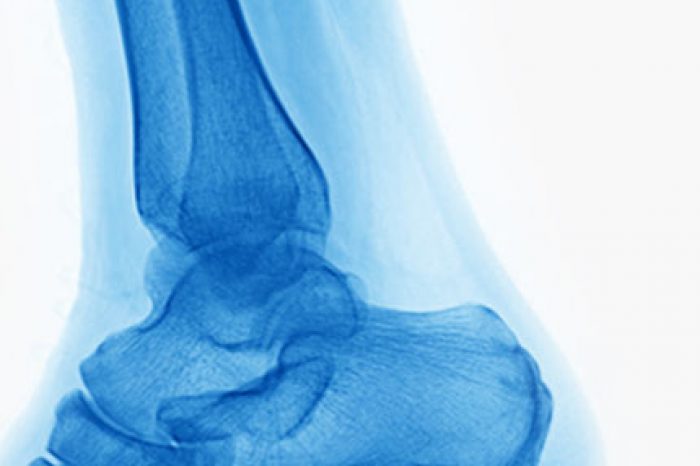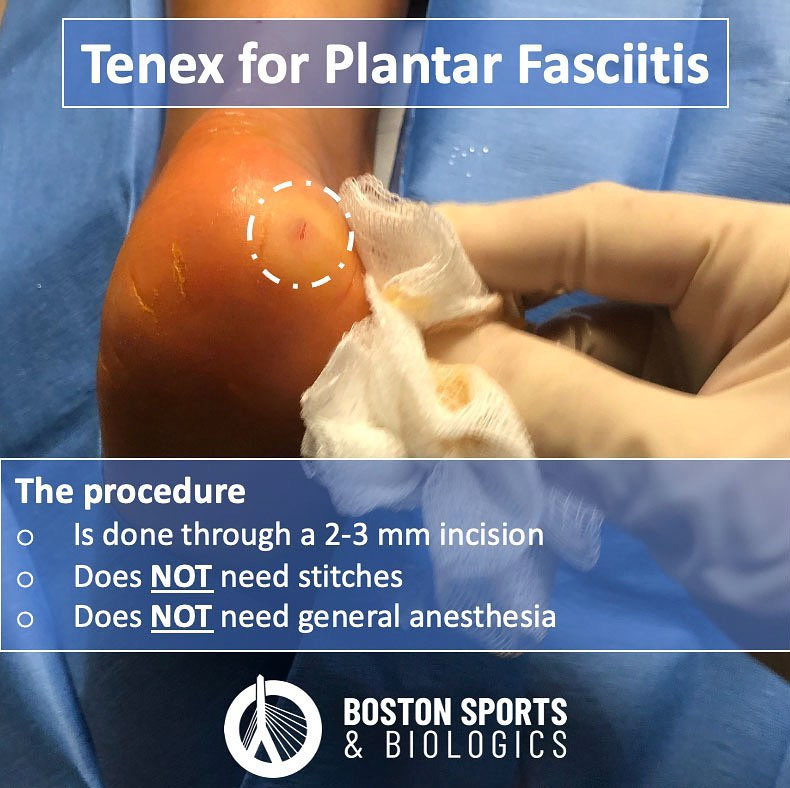

Chronic plantar fasciopathy, a condition marked by persistent heel pain, affects a significant portion of the population, especially individuals in their 5th and 6th decades of life. Traditionally, patients unresponsive to conservative treatments faced invasive surgicalinterventions. However, a new, minimally invasive fasciotomy using the Tenex device offers a promising alternative.
Chronic plantar fasciopathy, a condition marked by persistent heel pain, affects a significant portion of the population (learn more about plantar fasciitis here).
A minimally invasive fasciotomy is a procedure that employs ultrasound guidance and the Tenex device to cut, debride and remove diseased tissue from the plantar fascia while preserving healthy tissue. The method involves a tiny 3-mm incision, performed under local or regional anesthesia, making it significantly less invasive than traditional surgeries.
A prospective study led by Dr. Ryan Kruse and Elena Volfson evaluated the long-term efficacy and safety of ultrasonic fasciotomy in patients with chronic plantar fasciitis unresponsive to standard treatments. Over 67 participants were included and results followed for a year. The novel procedure using Tenex resulted in:
Unlike open or endoscopic fasciotomies, a fasciotomy using ultrasound guidance avoids complications such as prolonged recovery, altered gait, or arch height changes. Moreover, its minimally invasive nature reduces the risk of postoperative pain and infection.

This study underscores the potential of ultrasonic fasciotomy as a preferred option for patients who have exhausted conservative treatments. By offering effective pain relief, functional improvement, and a shorter recovery period, this innovative technique is reshaping how chronic plantar fasciopathy is managed.
A fasciotomy using ultrasound guidance and the Tenex device represents a new option for patients struggling with persistent heel pain.
If you or someone you know is dealing with chronic plantar fasciitis contact Boston Sports & Biologics to learn more.
Kruse RC, Volfson E. Ultrasonic Fasciotomy for the Treatment of Chronic Plantar Fasciopathy: A Prospective Study. Clin J Sport Med. 2024 Jul 1;34(4):335-340.
(781) 591-7855
20 Walnut St
Suite 14
Wellesley MA 02481
Adductor longus selective tenotomy is a modern surgical treatment for chronic groin pain that offers faster recovery and better outcomes than traditional full release surgery. The adductor longus, an inner thigh
Read MoreDiscover how ultrasound helps diagnose plantar fat pad atrophy, a leading cause of ball-of-foot pain. Learn about symptoms, thickness cutoffs, and why early detection matters for relief.
Read More